
Patricia Highsmith was an American novelist and short story writer widely known for her psychological thrillers, including her series of five novels featuring the character Tom Ripley.

Edith Wharton was an American writer and designer. Wharton drew upon her insider's knowledge of the upper-class New York "aristocracy" to portray realistically the lives and morals of the Gilded Age. In 1921, she became the first woman to win the Pulitzer Prize in Fiction, for her novel The Age of Innocence. She was inducted into the National Women's Hall of Fame in 1996. Among her other well known works are The House of Mirth, the novella Ethan Frome, and several notable ghost stories.
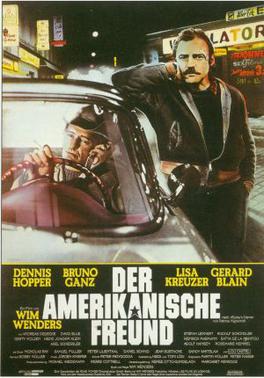
The American Friend is a 1977 neo-noir film by Wim Wenders, adapted from the 1974 novel Ripley's Game by Patricia Highsmith. The film features Dennis Hopper as career criminal Tom Ripley and Bruno Ganz as Jonathan Zimmermann, a terminally ill picture framer whom Ripley coerces into becoming an assassin. The film uses an unusual "natural" language concept: Zimmermann speaks German with his family and his doctor, but English with Ripley and while visiting Paris.

Thomas Phelps Ripley is a fictional character in a series of crime novels by American novelist Patricia Highsmith, as well as several film adaptations. He is a career criminal, con artist, and serial killer who always gets away with his crimes. The five novels in which he appears—The Talented Mr. Ripley, Ripley Under Ground, Ripley's Game, The Boy Who Followed Ripley, and Ripley Under Water—were published between 1955 and 1991.

This Sweet Sickness (1960) is a psychological thriller novel by Patricia Highsmith, about a man who is obsessed with a woman who has rejected his advances. It is a "painful novel about obsessive imaginary love".
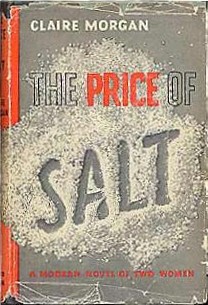
The Price of Salt is a 1952 romance novel by Patricia Highsmith, first published under the pseudonym "Claire Morgan." Highsmith—known as a suspense writer based on her psychological thriller Strangers on a Train—used an alias as she did not want to be tagged as "a lesbian-book writer", and she also used her own life references for characters and occurrences in the story.

Deep Water is a psychological thriller novel by Patricia Highsmith, first published in 1957 by Harper & Brothers. It is Highsmith's fifth published novel, the working title originally being The Dog in the Manger. It was brought back into print in the United States in 2003 by W. W. Norton & Company.

Phyllis Nagy is an American theatre and film director, screenwriter and playwright. In 2006, Nagy was nominated for the Primetime Emmy Award for writing and directing Mrs. Harris (2005), her screen debut. In 2016, Nagy received an Academy Award nomination, among numerous other accolades, for Best Adapted Screenplay for the 2015 film Carol.

The Cry of the Owl is a psychological thriller novel by Patricia Highsmith, the eighth of her 22 novels. It was first published in the US in 1962 by Harper & Row and in the UK by Heinemann the following year. It explores, in the phrase of critic Brigid Brophy, "the psychology of the self-selected victim".
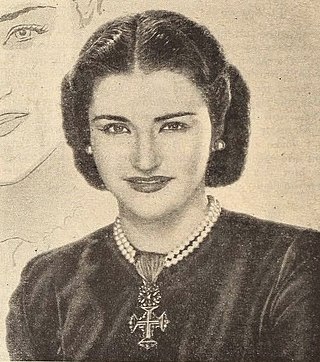
Theodora Roosevelt Keogh O'Toole Rauchfuss was an American novelist writing under her first married name, Theodora Keogh, in the 1950s and 1960s.

The Glass Cell (1964) is a psychological thriller novel by Patricia Highsmith. It was the tenth of her 22 novels. It addresses the psychological and physical impact of wrongful imprisonment. It appeared in both the UK and the US in 1964. When first published, the book jacket carried a warning that its opening scene is "almost unacceptable".
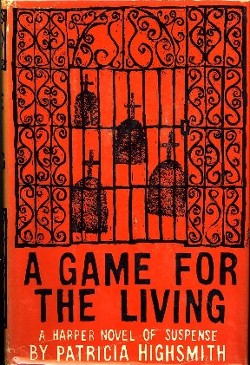
A Game for the Living (1958) is a psychological thriller novel by Patricia Highsmith. It is the sixth of her 22 novels and the only one set in Mexico.
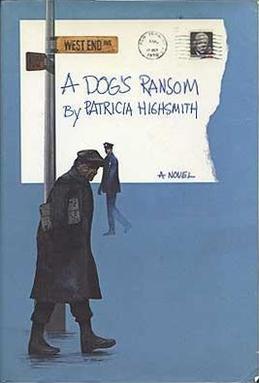
A Dog's Ransom (1972) is a psychological thriller novel by Patricia Highsmith.

Frances Minto Elliot (1820–1898) was a prolific English writer, primarily of non-fiction works on the social history of Italy, Spain, and France and travelogues. She also wrote three novels and published art criticism and gossipy, sometimes scandalous, sketches for The Art Journal, Bentley's Miscellany, and The New Monthly Magazine, often under the pseudonym, "Florentia". Largely forgotten now, she was very popular in her day, with multiple re-printings of her books in both Europe and the United States. Elliot had a wide circle of literary friends including Charles Dickens, Anthony Trollope and Wilkie Collins. Collins dedicated his 1872 novel, Poor Miss Finch, to her, and much of the content in Marian Holcolmbe's conversations in The Woman in White is said to be based on her.

Small g: a Summer Idyll (1995) is the final novel by American writer Patricia Highsmith. It was published in the United Kingdom by Bloomsbury a month after her death, after first being rejected by Knopf, her usual publisher, months earlier. It was published in the United States by W. W. Norton in 2004.
Patricia Schartle Myrer (1923–2010) was an editor, literary agent and publishing executive based in New York City. She was editor-in-chief of Appleton-Century-Crofts publishing. She eventually became president of McIntosh & Otis literary agency. She married novelist Anton Myrer in 1970. Some of the authors she represented were Mary Higgins Clark, Patricia Highsmith and Eleanor Hibbert. She retired in 1984 and died in 2010.
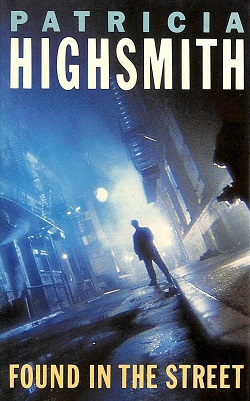
Found in the Street (1986) is the twentieth novel by the American expatriate writer Patricia Highsmith, the nineteenth published under her own name. It was published in the UK in April 1986 and in the US in 1987.

People Who Knock on the Door (1983) is a novel by Patricia Highsmith. It was the nineteenth of her 22 novels.
Joan Schenkar was an American playwright and writer. She is known for her biographies of writer Patricia Highsmith, and Dorothy Wilde, as well as for the production of several of her plays in New York in the 1980s, including Signs of Life, Cabin Fever, and The Last of Hitler.
List of works by or about Patricia Highsmith, American novelist.
















